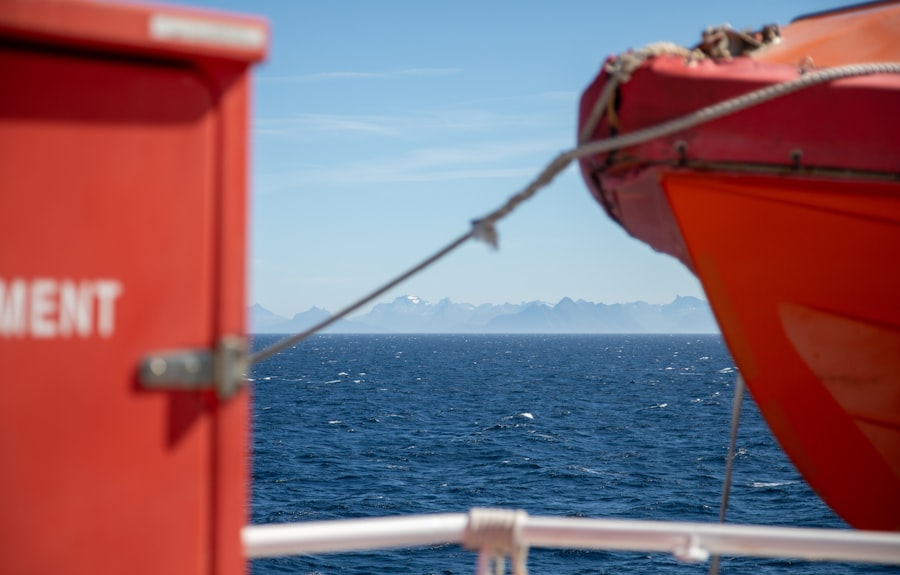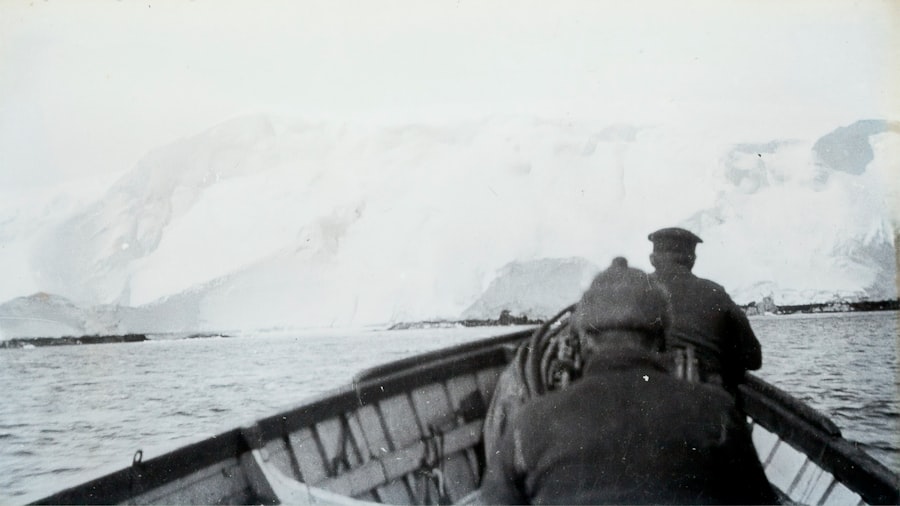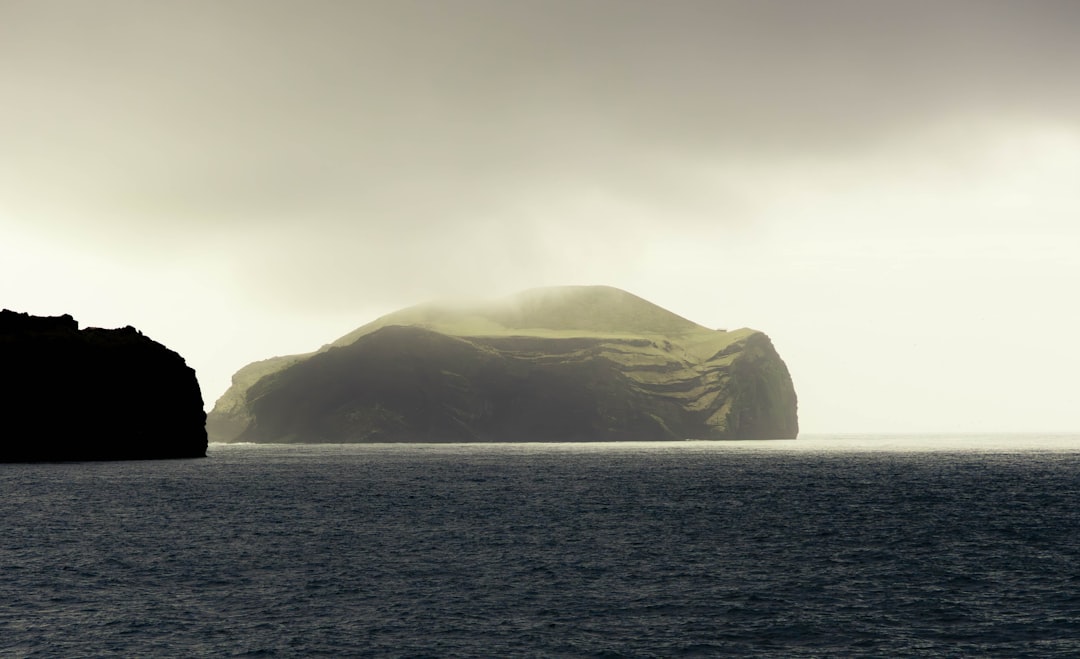The Drake Passage, a body of water that separates South America from Antarctica, is renowned for its tumultuous seas and unpredictable weather.
The confluence of the Atlantic and Pacific Oceans creates a unique environment where strong currents and fierce winds converge, resulting in rough seas that can test even the most seasoned sailors.
The passage is not only a geographical marvel but also a critical route for vessels traveling to and from Antarctica, making it a focal point for explorers and adventurers alike. Cape Horn, located at the southern tip of South America, serves as a sentinel to the Drake Passage. This iconic landmark has long been a symbol of maritime adventure and peril.
Named after the Dutch city of Hoorn, Cape Horn has a storied history as a navigational challenge for sailors since the 16th century. The rocky cliffs and treacherous waters surrounding Cape Horn have claimed numerous ships over the centuries, earning it a reputation as a graveyard for vessels caught in its fierce storms. Despite its dangers, Cape Horn remains a sought-after destination for those wishing to experience the raw beauty of nature and the thrill of crossing one of the world’s most notorious maritime routes.
Key Takeaways
- The Drake Passage is a treacherous body of water between South America’s Cape Horn and the South Shetland Islands of Antarctica.
- The best time to cross the Drake Passage is during the austral summer, from November to March, when the weather is milder and the sea conditions are more favorable.
- When preparing for the journey, pack warm, waterproof clothing, sturdy footwear, and essential medications to combat seasickness and other ailments.
- Navigating the weather and sea conditions in the Drake Passage requires careful monitoring of forecasts and the ability to adapt to changing circumstances.
- Safety measures and emergency protocols are crucial for any journey through the Drake Passage, including regular safety drills and the presence of experienced crew members.
Choosing the Right Time to Cross
Selecting the optimal time to traverse the Drake Passage is crucial for ensuring a smoother journey.
During this period, temperatures are milder, and the likelihood of encountering severe storms diminishes significantly.
Many travelers opt to embark on their voyages during these months to take advantage of calmer seas and clearer skies, enhancing their overall experience. However, it is essential to recognize that even during the summer months, conditions can still be unpredictable. The Drake Passage is notorious for its rapidly changing weather patterns, which can shift from serene to stormy in a matter of hours.
Therefore, travelers should remain flexible with their plans and be prepared for potential delays or changes in itinerary. Consulting with experienced crew members or tour operators can provide valuable insights into the best times to cross, ensuring that adventurers are well-informed and ready for whatever challenges may arise.
Packing and Preparing for the Journey

Preparation is key when embarking on a journey across the Drake Passage. Travelers should begin by packing appropriate clothing that can withstand the region’s variable weather conditions. Layering is essential; lightweight thermal base layers, waterproof outer shells, and insulated jackets will help keep individuals warm and dry.
Additionally, sturdy footwear is crucial for navigating wet decks and rocky shorelines. Accessories such as gloves, hats, and sunglasses should not be overlooked, as they can provide added comfort against wind and sun exposure. Beyond clothing, travelers should also consider packing essential gear for their journey.
A good quality camera is vital for capturing the stunning landscapes and wildlife that inhabit the region. Binoculars can enhance the experience by allowing individuals to observe distant marine life or seabirds in greater detail. Furthermore, personal items such as seasickness medication, sunscreen, and reusable water bottles should be included to ensure comfort and well-being throughout the trip.
By taking the time to prepare adequately, travelers can focus on enjoying their adventure rather than worrying about unforeseen challenges.
Navigating the Weather and Sea Conditions
| Metrics | Values |
|---|---|
| Wind Speed | 15 knots |
| Wave Height | 2 meters |
| Visibility | 10 nautical miles |
| Barometric Pressure | 1015 mb |
Understanding how to navigate the weather and sea conditions in the Drake Passage is paramount for a successful crossing. The region is characterized by its strong winds, which can reach speeds of up to 60 knots or more, creating formidable waves that can rise to heights of 10 meters (33 feet) or greater. Sailors must be adept at reading weather patterns and interpreting forecasts to anticipate changes that could impact their journey.
Knowledge of local meteorological phenomena, such as squalls and low-pressure systems, can provide valuable insights into what to expect during the crossing. In addition to monitoring weather conditions, sailors must also be prepared to adjust their sailing strategies accordingly. This may involve altering course or speed in response to changing sea states or wind patterns.
Experienced crew members often employ various techniques to maintain stability and safety while navigating rough waters. Understanding how to use sails effectively in high winds or how to position a vessel to minimize rolling can make a significant difference in comfort levels during the crossing. By being proactive and adaptable, sailors can enhance their chances of successfully navigating the challenges posed by the Drake Passage.
Safety Measures and Emergency Protocols
Safety should always be a top priority when crossing the Drake Passage. Vessels must be equipped with essential safety gear, including life jackets, flares, first aid kits, and emergency beacons. Crew members should conduct thorough safety briefings before departure, ensuring that all passengers are familiar with emergency protocols and procedures.
This includes understanding how to operate life-saving equipment and knowing evacuation routes in case of an emergency. In addition to equipment and training, maintaining open lines of communication is vital for safety at sea. Regular check-ins with other vessels in the area can provide valuable information about changing conditions or potential hazards.
Furthermore, having a well-defined plan for emergencies—such as man overboard situations or medical emergencies—can help ensure that everyone on board knows how to respond quickly and effectively. By prioritizing safety measures and being prepared for unforeseen circumstances, travelers can enjoy their journey across the Drake Passage with greater peace of mind.
Wildlife and Natural Wonders

The Drake Passage is not only known for its challenging conditions but also for its rich biodiversity and stunning natural wonders. As travelers navigate these waters, they may encounter an array of marine life, including whales, seals, and various species of seabirds. The passage serves as a migratory route for humpback whales and orcas, providing opportunities for unforgettable wildlife sightings.
Observing these majestic creatures in their natural habitat adds an extraordinary dimension to the journey. In addition to marine life, the landscapes surrounding the Drake Passage are breathtakingly beautiful. Towering icebergs drift through the waters, their brilliant blue hues contrasting against the deep ocean blue.
Glaciers calve into the sea with thunderous roars, creating spectacular displays of nature’s power. The rugged coastlines of Cape Horn are adorned with dramatic cliffs and lush vegetation, offering stunning vistas that captivate all who witness them. For nature enthusiasts and photographers alike, this region presents an unparalleled opportunity to connect with some of the planet’s most awe-inspiring landscapes.
Historical Significance of Cape Horn
Cape Horn holds immense historical significance as a pivotal point in maritime exploration and trade routes. Since its discovery in 1616 by Dutch explorer Willem Schouten, it has served as a critical passage for ships traveling between Europe and the Americas before the construction of the Panama Canal. The treacherous waters surrounding Cape Horn have been both a challenge and a gateway for countless sailors throughout history.
The stories of shipwrecks and daring rescues have become part of Cape Horn’s lore, contributing to its mystique as a sailor’s graveyard. Many vessels have succumbed to its fierce storms, while others have successfully navigated its perilous waters against all odds. Today, Cape Horn stands as a testament to human resilience and determination in the face of nature’s challenges.
Its historical significance continues to draw adventurers seeking to honor those who have come before them while experiencing firsthand the trials faced by early explorers.
Tips for Minimizing Seasickness
Seasickness can be a common concern for travelers crossing the Drake Passage due to its notorious rough waters. However, there are several strategies that individuals can employ to minimize discomfort during their journey. One effective approach is to choose accommodations wisely; cabins located in the middle of the vessel tend to experience less motion than those at either end.
Additionally, travelers should consider spending time on deck when possible, as fresh air can help alleviate feelings of nausea. Another helpful tip is to stay hydrated and maintain a light diet before and during the crossing. Consuming small meals that are low in fat can help keep nausea at bay while providing necessary energy for activities on board.
Over-the-counter medications specifically designed for motion sickness can also be beneficial; travelers should consult with their healthcare provider before departure to determine which options are best suited for their needs. By taking proactive measures against seasickness, individuals can enhance their overall experience while navigating the Drake Passage.
Capturing the Beauty of the Passage
The breathtaking beauty of the Drake Passage offers countless opportunities for photography enthusiasts to capture stunning images throughout their journey. From dramatic seascapes featuring towering waves crashing against rocky shores to serene moments when calm waters reflect vibrant sunsets, every aspect of this region presents unique photographic potential. Travelers are encouraged to bring high-quality cameras with telephoto lenses to capture distant wildlife or intricate details within ice formations.
In addition to traditional photography techniques, travelers may also explore creative approaches such as time-lapse photography or long-exposure shots that highlight movement within turbulent waters. Utilizing filters can enhance colors during sunrise or sunset while adding depth to landscape images taken during daylight hours. By embracing their artistic side and experimenting with different techniques, adventurers can create lasting memories that encapsulate both their journey across the Drake Passage and its awe-inspiring natural beauty.
Exploring the Surrounding Islands and Landscapes
Beyond crossing the Drake Passage itself lies an array of islands and landscapes waiting to be explored by intrepid travelers. The South Shetland Islands, located just north of Antarctica, offer opportunities for hiking on volcanic terrain or observing penguin colonies in their natural habitats. Each island boasts unique geological features and ecosystems that contribute to its charm.
Additionally, visitors may find themselves drawn to Deception Island—a volcanic caldera known for its dramatic landscapes and historical whaling stations—where they can learn about past expeditions while enjoying breathtaking views from its rugged cliffs. Exploring these surrounding islands allows travelers not only to appreciate their natural beauty but also gain insight into their ecological significance within this remote region of the world.
Reflecting on the Experience
Crossing the Drake Passage is more than just a physical journey; it is an opportunity for personal reflection and growth amidst some of nature’s most awe-inspiring landscapes. As travelers navigate these tumultuous waters, they often find themselves contemplating their place within the vastness of the ocean and appreciating life’s fleeting moments in ways they may not have anticipated before embarking on this adventure. The experience fosters connections—not only with fellow travelers but also with nature itself—as individuals witness firsthand its raw power and beauty.
Many return home with newfound perspectives on resilience, adventure, and environmental stewardship after experiencing such an extraordinary crossing through one of Earth’s most challenging maritime routes. Ultimately, reflecting on this journey allows individuals to carry forward lessons learned while cherishing memories made along this remarkable passage through time and space.
The Drake Passage and Cape Horn are renowned for their treacherous waters and challenging navigation conditions, making them a significant topic of interest for maritime enthusiasts and geographers alike. For those looking to delve deeper into the geographical and historical significance of these regions, an insightful article can be found on MyGeoQuest. This article explores the unique environmental conditions and the historical voyages that have traversed these waters. To learn more, you can visit the article by clicking on this link.
WATCH NOW! Drake Passage: Earth’s Deadliest Waters Revealed
FAQs
What is the Drake Passage?
The Drake Passage is the body of water between the southern tip of South America (Cape Horn) and the South Shetland Islands of Antarctica. It connects the Atlantic Ocean to the Pacific Ocean.
Why is the Drake Passage significant?
The Drake Passage is known for its rough and unpredictable seas, making it one of the most challenging and notorious waterways for sailors and explorers. It is also a critical route for the circulation of ocean currents and marine life between the Atlantic and Pacific Oceans.
What is Cape Horn?
Cape Horn is the southernmost headland of the Tierra del Fuego archipelago of southern Chile. It is widely considered the southernmost point of South America and marks the northern boundary of the Drake Passage.
Why is Cape Horn significant?
Cape Horn is a major milestone for sailors and adventurers, as it represents a significant navigational and maritime challenge due to its fierce winds, strong currents, and unpredictable weather conditions. It has a reputation as one of the most treacherous and dangerous capes to navigate.
What is the relationship between the Drake Passage and Cape Horn?
The Drake Passage and Cape Horn are closely linked geographically, with the passage serving as the body of water that separates Cape Horn from the South Shetland Islands of Antarctica. Both are known for their extreme and challenging maritime conditions.
